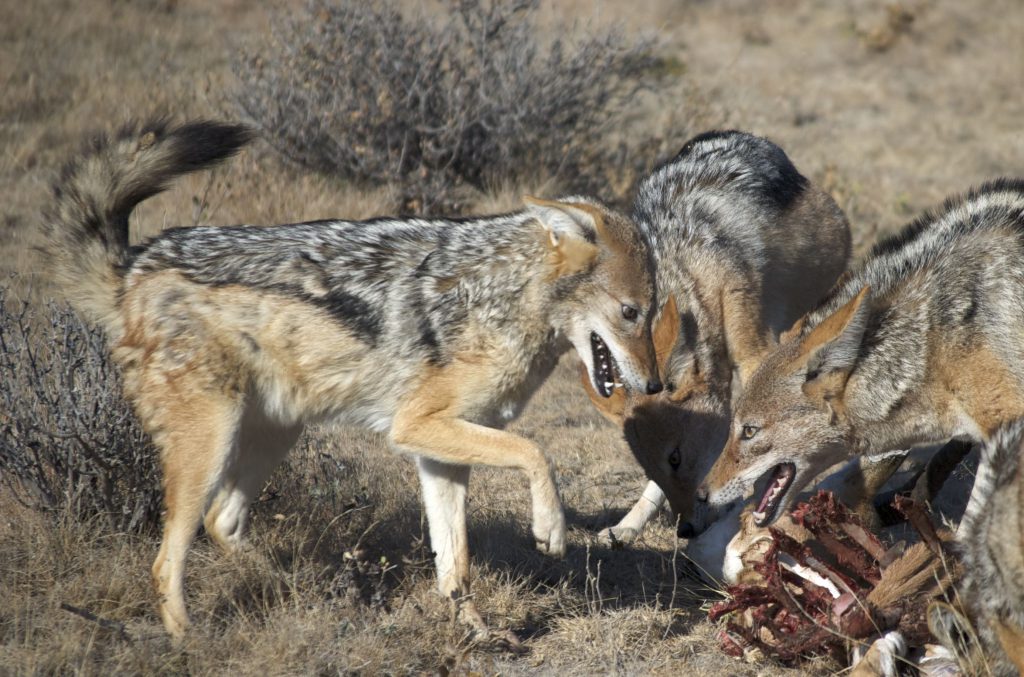
Our new paper in the Journal of the Royal Society Interface explores how ephemeral resources shape the disease transmission network of foragers attracted to those resources. The paper is motivated by a question Steve developed during his PhD research on anthrax outbreaks in plains zebra and the movement patterns of the black-backed jackals that scavenge those carcasses in Etosha National Park, Namibia. Jackals consume anthrax carcasses without getting sick; but huge aggregations of otherwise territorial jackals at carcasses (in the dozens) may facilitate transmission of diseases like rabies through aggressive interactions (see photo above). Using mathematical modeling and statistical analyses of jackal movement data, we show that the contact rate between jackals initially increases with the number of available carcasses, but then decreases as carcasses are so plentiful that there are fewer jackals sharing each carcass. Importantly, the resource density at which the jackal contact rate peaks depends on from how far away jackals can detect carcasses. This work was led by Becky Borchering at the University of Florida.
Borchering, Bellan, Flynn, Pulliam, Mckinley, Mckinley (2017). Resource-driven encounters among consumers and implications for the spread of infectious disease. Journal of the Royal Society Interface. (PDF)